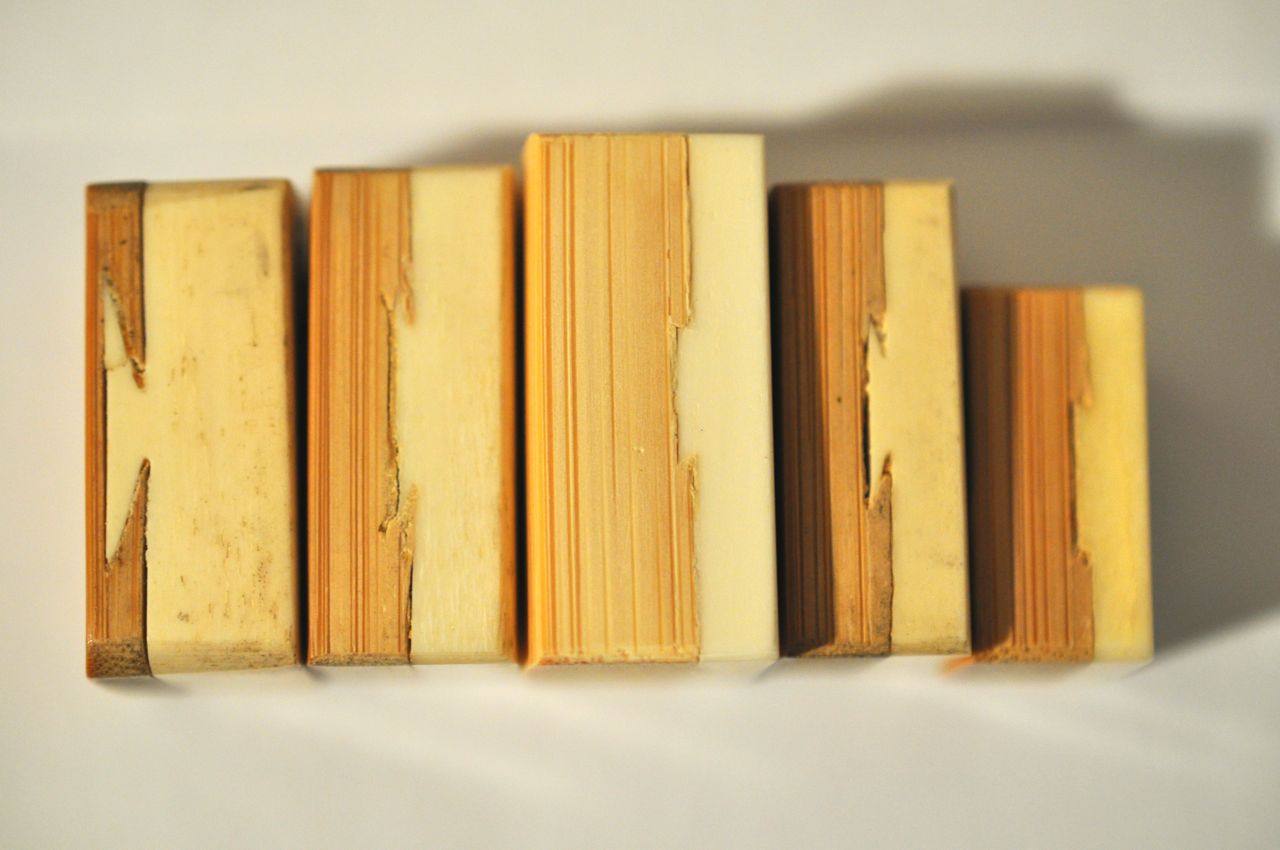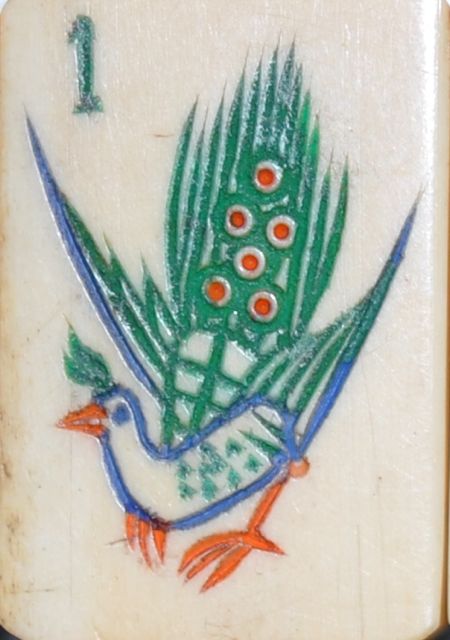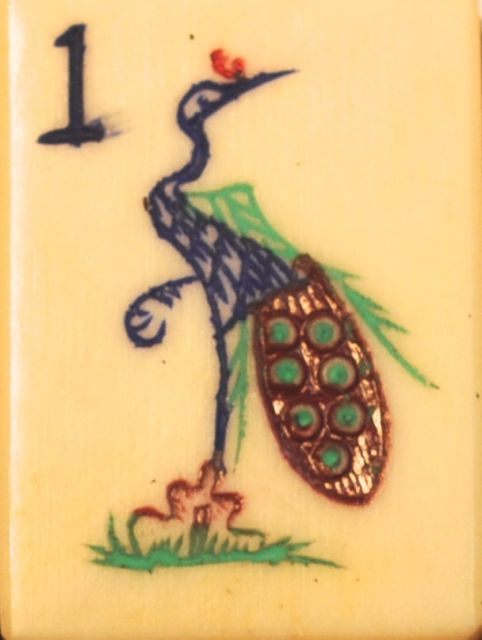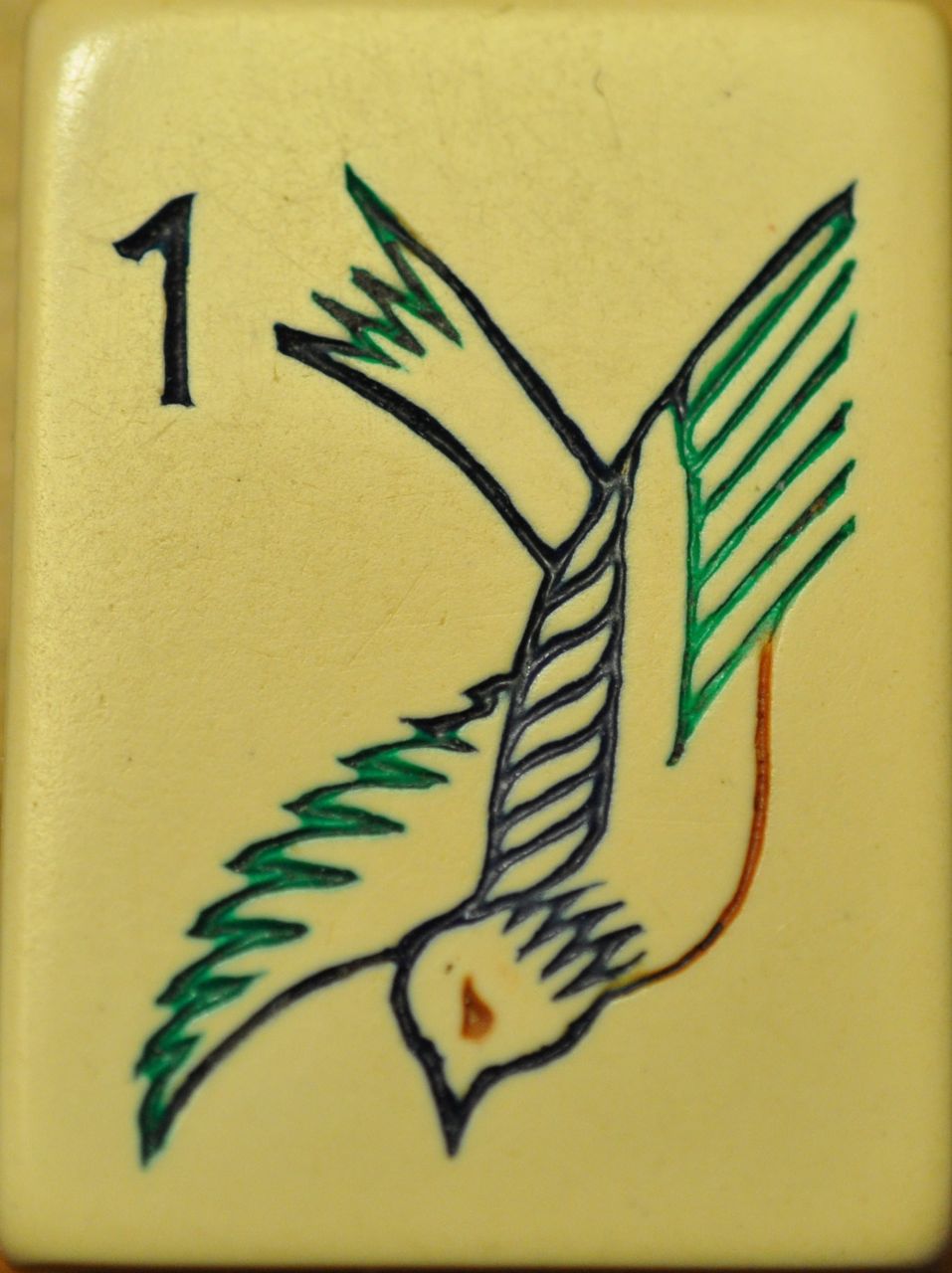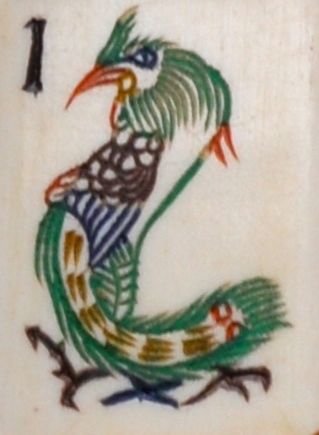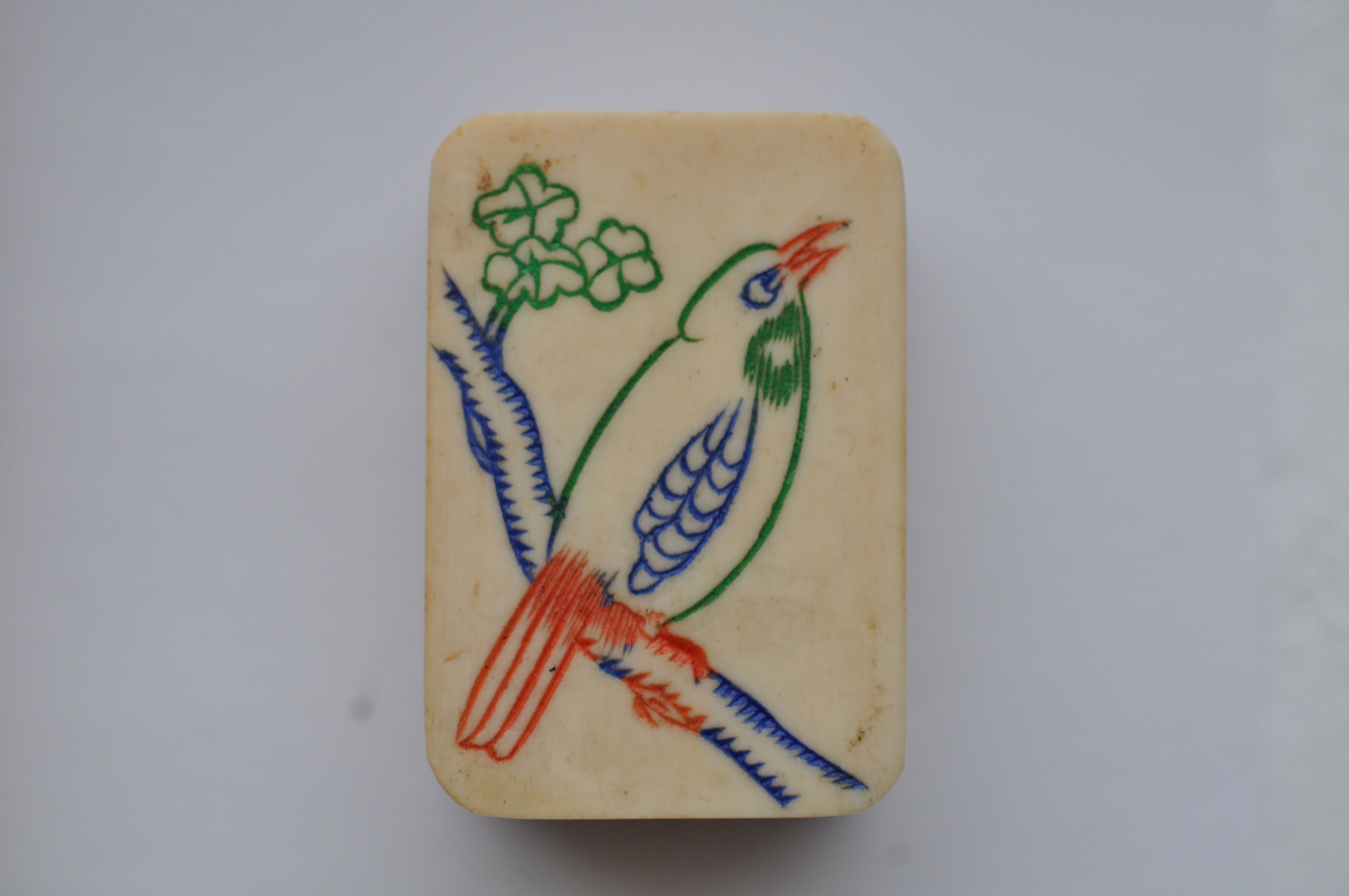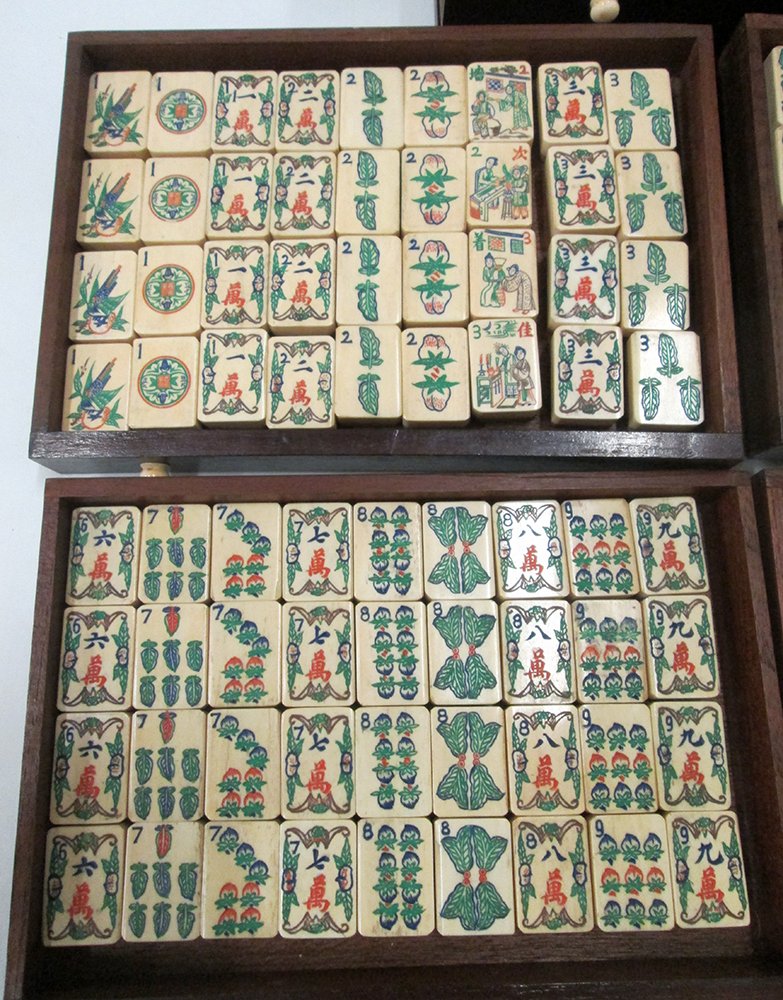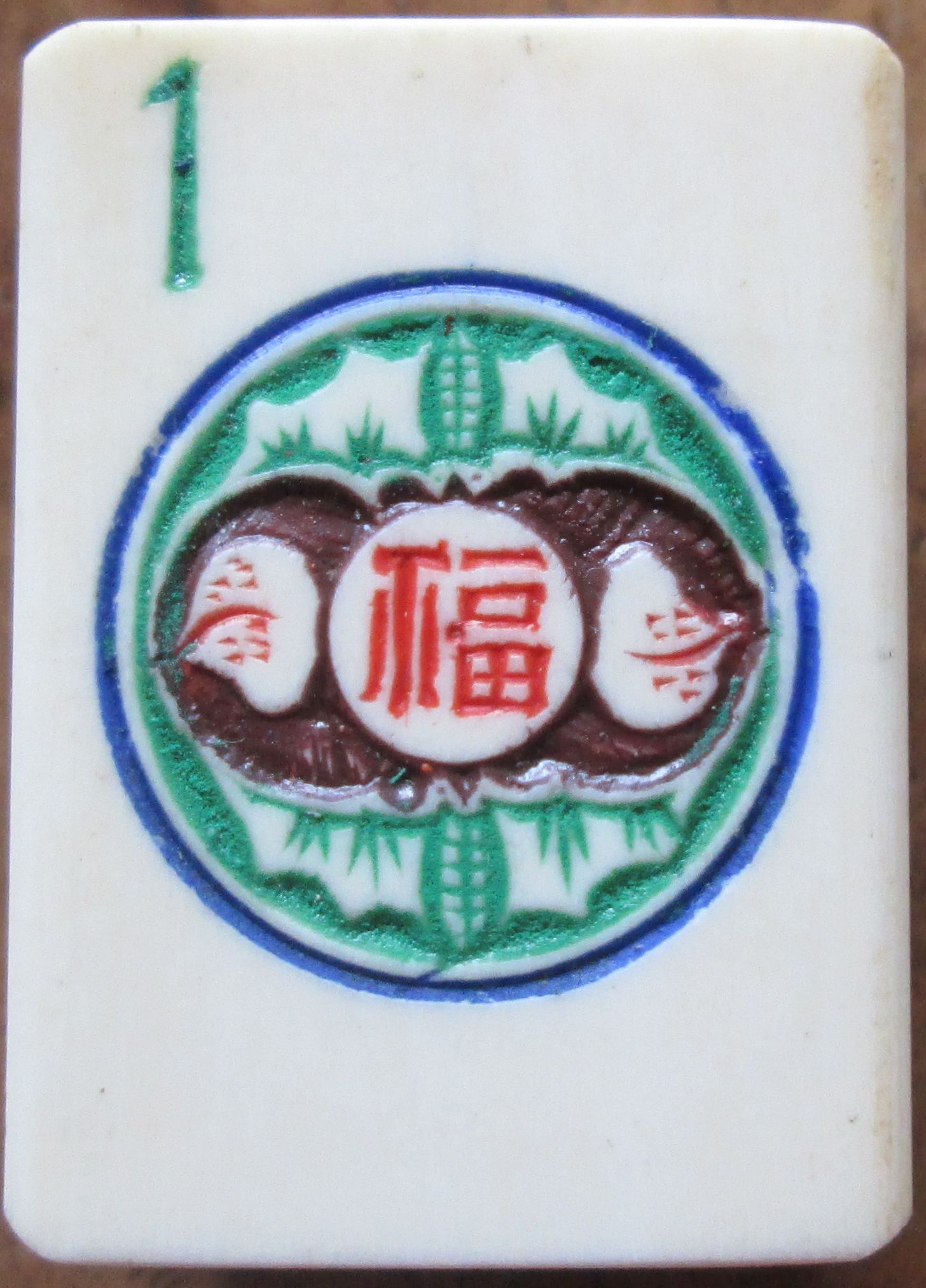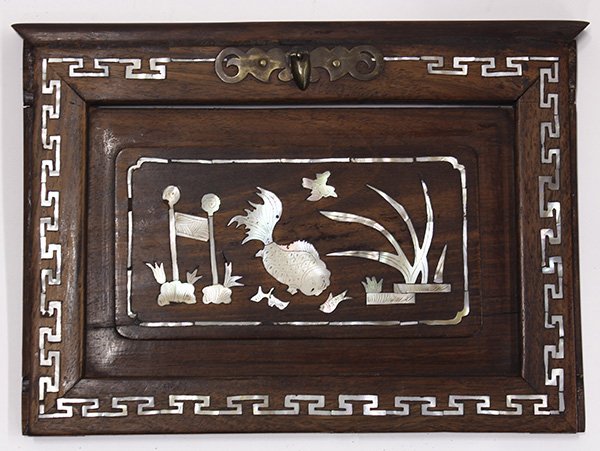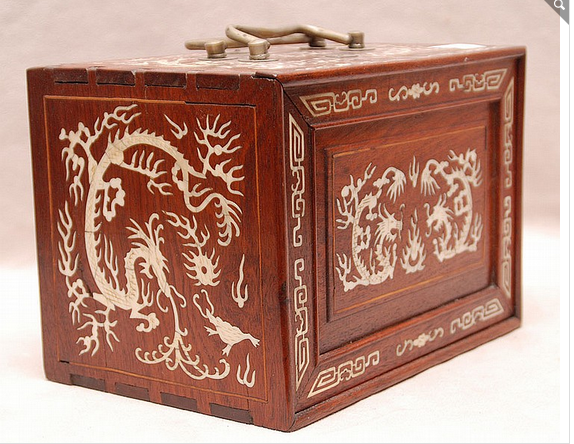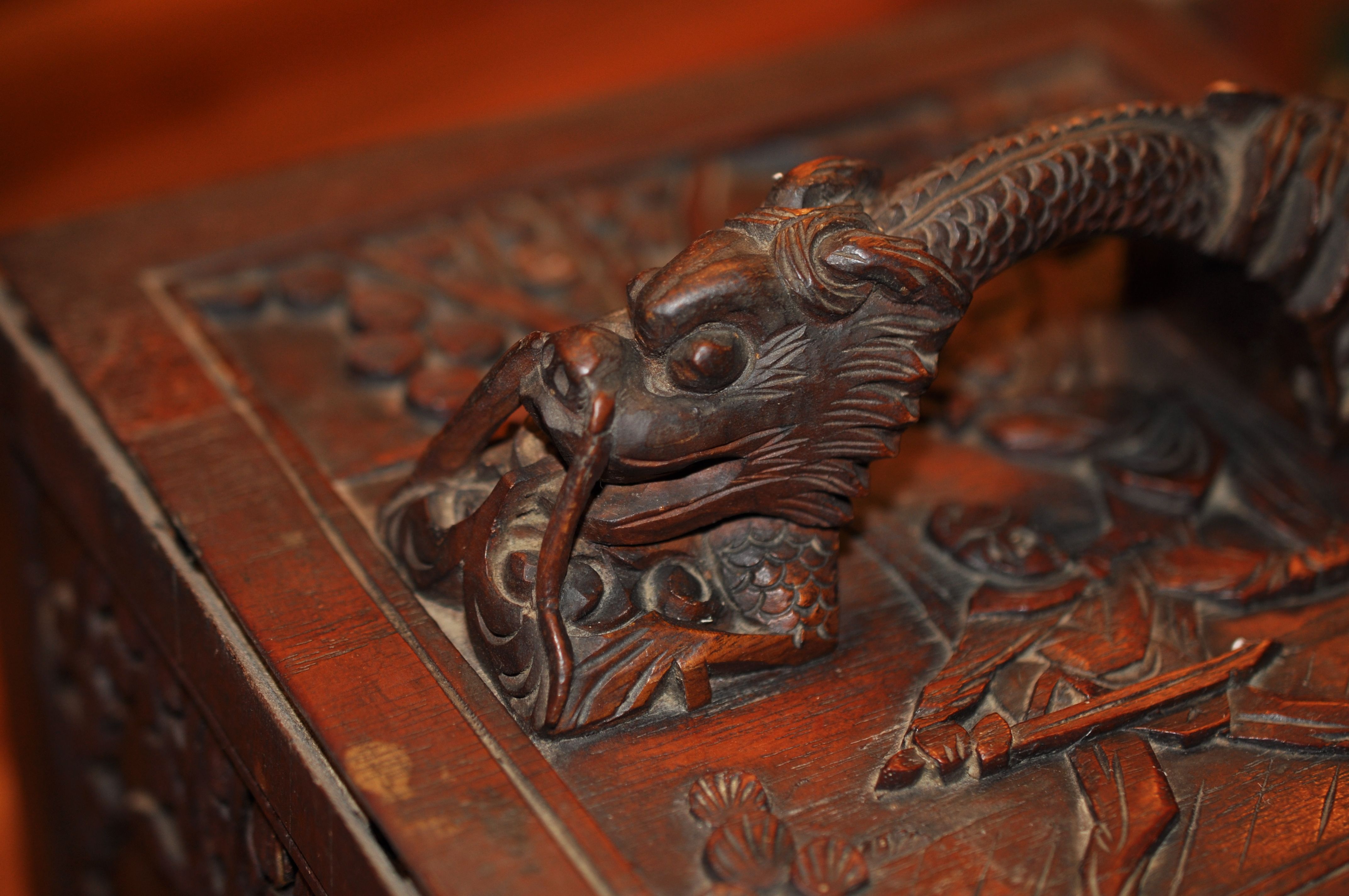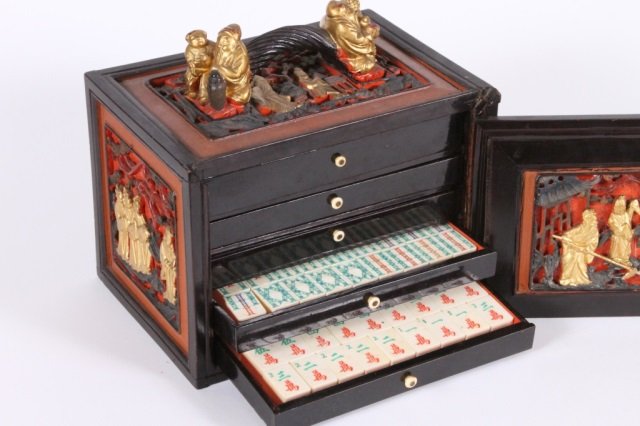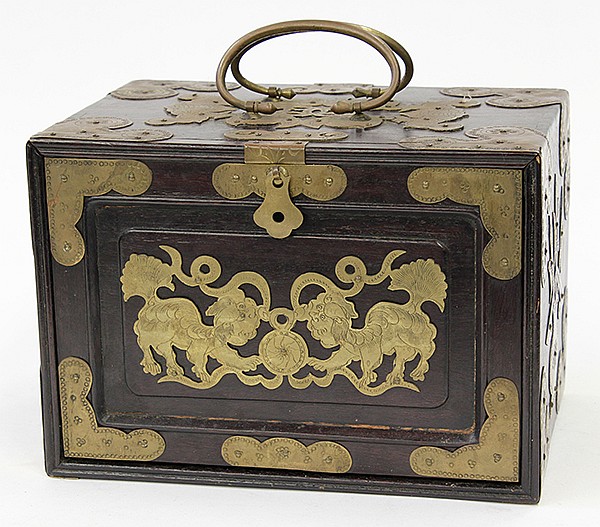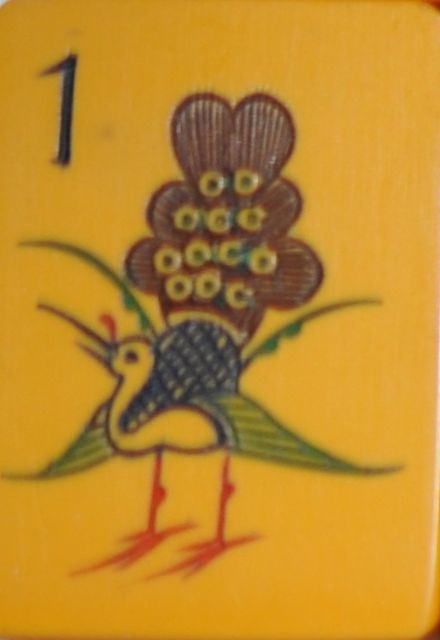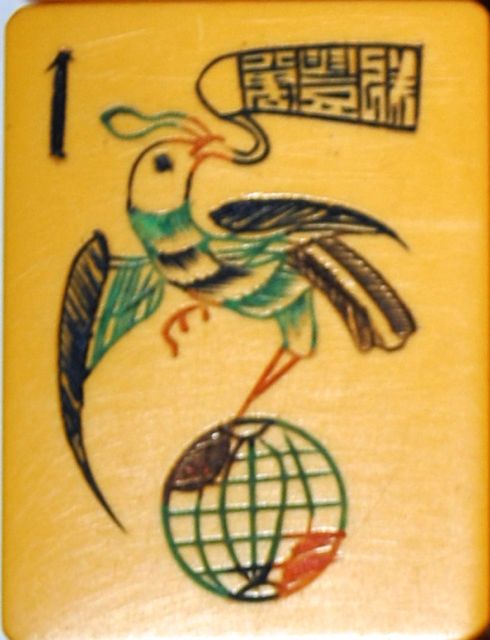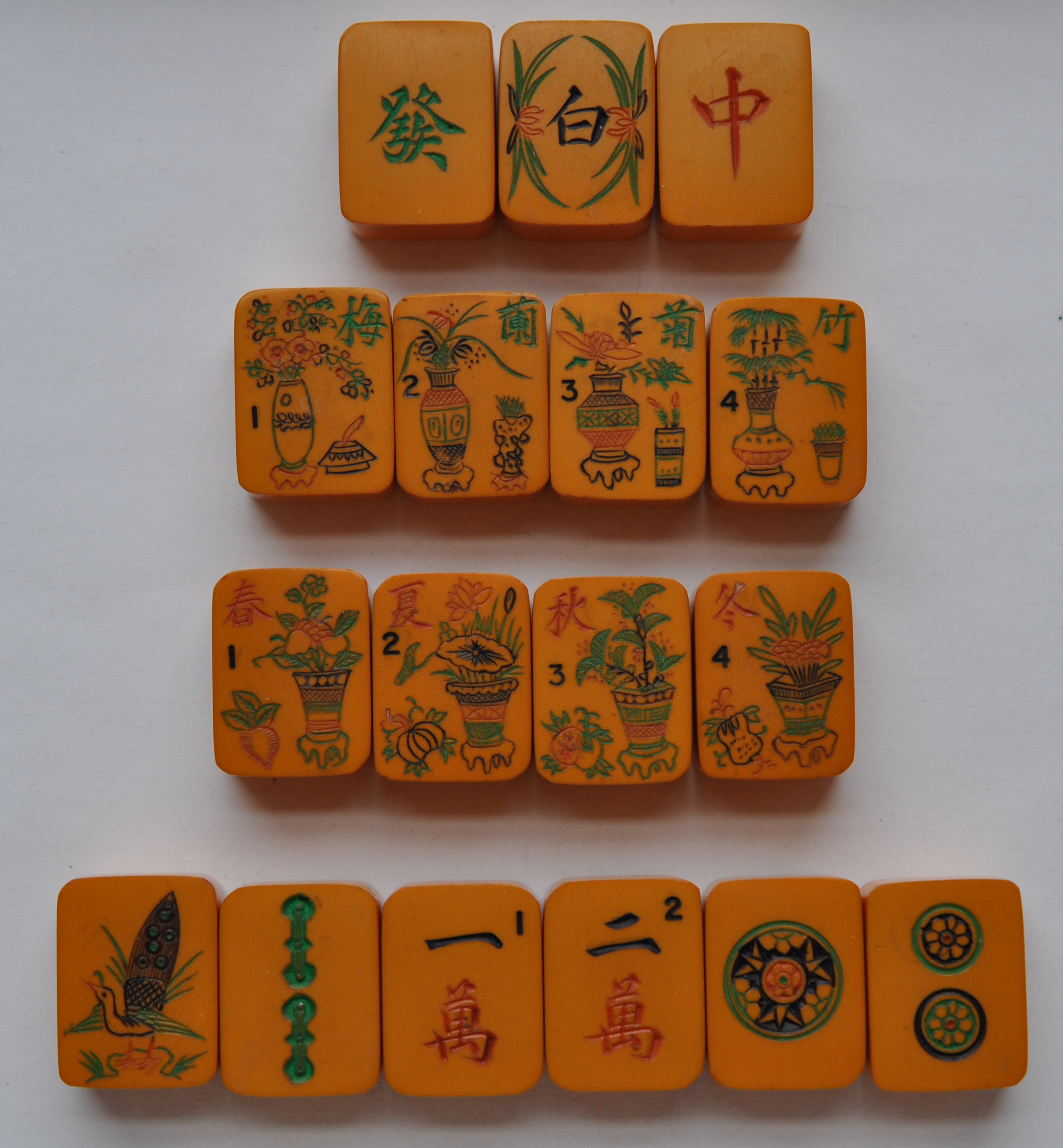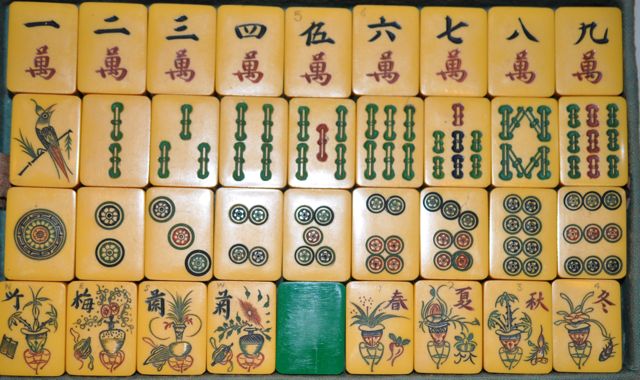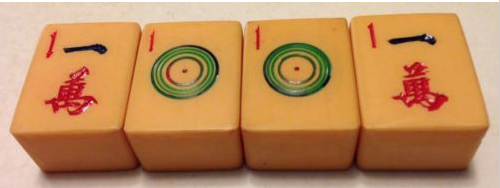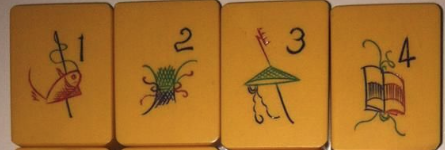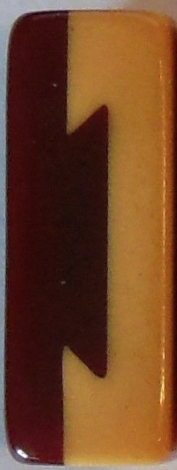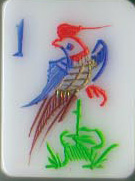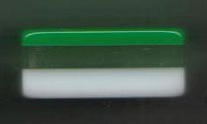At the very bottom of this post you will see the news about my newest book that will help you understand the value of your vintage plastic sets.
How much is your set worth? That's a tough question, and there are many things to consider.
I am not a professional appraiser, I am just passing along some of what I have learned by studying sales and sets.
This website will not give you any real numbers, but it will give you a range, an idea of what to look for. Vintage and antique sets sell from $100 on the very low side to well into the thousands. There are bone and bamboo sets that have sold for over $5,000, but they are very special indeed. Other sets, made of unusual substances, may sell for more if they are made from precious materials. Even if of common materials such as tin, sets can command near $1,000.
We will start with bone tiles.
First: Is your set complete? If you don't know what to look for, look at this page in the website.
Second: What is it made of? Bone dovetailed into bamboo? (Many people think they have ivory sets, but usually they don't. Ivory has distinctive cross-hatching marks, and bone has haversian lines.) Here is a website that will help you learn the difference between ivory and bone.
http://www.antiquegamblingchips.com/distinguish_iv_bon_cel.htm
Also, some plastics imitate the look of ivory and bone, so it is important to learn to tell the difference.
Is the bone dovetailed into bamboo, or ebony or horn? The bone and bamboo pairing is the most common, so if the bone is dovetailed with anything other than bamboo that increases the unique quality of the set. If it is bone, how thick is the bone versus the thickness of the bamboo? The thicker the bone, the more valuable the set can be. Bone can range from being about 1/10th the thickness of the tile to being close to 9/10ths at the bottom of the dovetail.
Any set carved of bone is mostly hand-carved, making it sought after by many since no two sets are ever completely identical.
How thick is the bone and what does the dovetailing look like?
Above you see a how some tiles might differ one from another. The far left tile is from a beautifully carved very thick bone special set. You can see how the bamboo at the bottom of the dovetail almost doesn't exist it is so thin. Although close to 100 years old, the dovetail still looks pretty tight. The next one still looks pretty good, especially for being about 90 years old, and the bone is at about 50 %. The middle tile is from a newer set. You can see it is clunkier looking, with thinner bone (about 30 %) and a less impressive dovetail. It comes from a sought-after set, though, that is an homage to a very elaborate set made in the 1920s. The next tile is about 40 % bone, but it is from a special set with animal Flowers so it can be forgiven its somewhat gaping dovetail (there are ways to fix it so that it looks all right.) And the last tile is from a set made in the 1960s to 1970s, the kind you see in boxes with sliding tops. The bone is not thick but the carvings are delightful.
The above tiles have very thin bone and real problems with the dovetails, thus reducing the value of a set.
Sets originally were made with no Arabic numbers or Western letters, making it hard for people who rely on those indices to play. Sets that were made for export, with nicely placed numbers and letters, are desirable.
The other factors for value are the details of the carving and painting, and the images. The more delicate and detailed the images are, the more valuable the set as a general rule. Elaborate Flower tiles, possibly telling a story, are desirable, as are tiles with animals, and special forms of transportation such as interconnected tiles of trains and ships. Do the Flower images go from one tile to the next?
Above we have an interconnected train and steamship, but there can be scenes of dancers, warfare, ladies in a garden, etc.
The One Bam and the One Dot attract a lot of attention, and can drive up the price of a set. Normal One Bams are a peacock
or
sparrow (seen here on a pyralin tile)
and crane.
More unusual ones are a Bamboo shoot
a phoenix
a bird in song, or any other kind of bird that has not been shown here. Very rare sets might feature a Shrimp One Bam or another unexpected creature.
Are the other suits simple or elaborate?
You can see the middle tile, a 1 Crak, is most unusual and elaborate and thus is one from a more (read very) expensive set. But many very good suits had the simple version of the Wan, seen here on the outer tiles.
The above set was auctioned off at Vero Beach Auctioneers. You can see how elaborate the carving is. The Dots are probably peaches, the Bams are leaves, and the Craks are surrounded by bats and fruit. In addition, you see the unusual Flowers, with scenes of a marriage, an unusual bird and perhaps Buddha's hand One Bam, and a One Dot that is not your everyday circle or head of a flower. To make things a bit more complicated, even if this set did not have very thick bone, because of the extraordinary carvings and the incredible shape it is in, it would be much more valuable than a more run of the mill set with thicker bone.
One Dots can make a difference too. In the above set you saw one that is a peach, but on rare sets they can also be crabs, or the head and body of a dragon curled up inside the circle.The following ones are somewhat unusual Dots, increasing the value of the sets.
Round circles on Dots were made by hand using circular drills, thus they were the easiest Dots to make. You can see the Dots on the lower right tiles took a great deal of skill to make, as did the left middle ones and the center of the right middle One Dot.
This One Dot from Katherine Hartman's collection is unusual because of the two peaches on the inside, surrounded by two bats. But if you did not look carefully, you would not know. So study your set.
The condition of the tiles makes a big difference too. If your tiles are pristine, you will get more for your set. If they are not discolored, and if they don't have mildew, you will get more too.
The ebay price range on these bone and bamboo sets can go from under $100 for a thin boned set with simple carvings, to $200 for a set with a box and simple carvings on tiles about 25% bone, to between $300 and $400 for tiles with a nice box with interesting Flowers, even if the bone is only 50%. Once the bone becomes thicker, sets routinely sell in the $400s and up. If there are joker tiles that match nicely so that your set can be played with according to National Mah Jongg Leagues rules, you can easily add a minimum of $60 to the value of your set, and much more the thicker the bone on the tile. And if the box is beautiful, ornately carved or inlaid with bone, you can add several hundred dollars to the set's value.
So, with all of this knowledge we can now turn to the box the set came in. If the box is in good shape, you are ahead of the game. If it is inlaid with bone or mother-of-pearl, even better.
Mother of pearl
A fabulous dragon bone inlay box
Is it deeply carved?
Although not a traditional Mahjong box, this one is highly desirable because of the exquisite carving.
This one has carved scenes but a wonderful dragon handle.
It is no surprise this box auctioned on Liveauctioneers holds an ivory set. Not only is it deeply carved with an elaborate handle, it is painted.
Lacquer boxes are desirable too:
A terrific box with a dragon
And boxes might be valued because of their brass trim.
The above box was auctioned off by Clars Auction Gallery in 2013.
So you can see how a wonderful box can add value, hundreds of dollars, to your set's worth.
Chinese Bakelite sets are also hand-carved and wonderful. The designs run the gamut from being the more common peacock One Bams and floral Flowers, to being more unusual. These sets on ebay range from around $150 for very simple, somewhat clunky tiles to over $400 if the tiles are well carved, to more if the scenes are unusual or if there is a wafer backing. Some sets have sold for more than $1000 if the Flowers are of special significance, historical or otherwise. Once again the condition of the tiles is important: are they discolored in some way? Are they splitting apart? Those situations will greatly decrease the value of your set.
A delightful peacock One Bam
A very sought after "talking hawk" although other hawks are sought after too.
A very rare horned owl among the other suits. Owls are very popular and highly desirable, and this is the only horned owl I have ever seen.
An unusual singing bird
The Flowers may be usual:
Here the Flowers are like those often seen, but the White Dragon (middle tile top row) isn't, making the set interesting. The tiles are somewhat small too.
Normal Flowers but beautifully and delicately carved, with green backs, making this set desirable. Often Chinese Bakelite sets with wafer backs go for more money than plain ones.
And this set is wonderful too, because the scene continues from one tile to the next. This is an example of a "leisure" set. Continuous Flowers command more money. Be sure you group your tiles by color of the Chinese character, (on the above tiles they are red) and 1234 and 4321 to see if you have a continuous scene.
How good is the carving on the tiles? Is it detailed and delicate like this one:
or is it a bit less detailed such as these that follow?
Usually, the simpler the carving, the less expensive the set.
French Ivory is valuable in and of itself. Made to look like ivory, it has striations with alternating shades of off white. It too could be hand-carved.
Looking at the beauty of the carving, and the details, you can see why real hand-carved French Ivory commands a good price. There are other two-tone French Ivory tiles made by Piroxloid that also have good value, the more brilliant the color of the backs (green or orange bring more than black) the greater the value.
Unlike other substances, most French Ivory sets are unusual in and of themselves, although a few companies such as Piroxloid made some commercial mass-produced sets.
Bakelite sets tend to have value because of the manufacturer. Certain companies such as Rottgames, MET, Coronet, Chinese Games Company, Hillson's and Portland Billiard Ball Company are among the top makers. Don't trust the label you see inside your box or case. Check out CHarli's website www.13orphans.com, where you can see if what you think you have is what you have.
Bakelite sets from the 1920s, 1930s and 1940s are highly sought after. Is your set complete? Do all the tiles match? That's good.
Are there discolorations, markings, dents or flea bites? Is all the paint there? These are negatives, although if a tile is just missing paint it can usually be restored.
Are your bakelite tiles all one color, or do they have a different color back? Tiles that are two color can be more valuable, although there are some new somewhat chunky two-color plastic tiles that do not have as much value. Tiles that are enrobed ( ie: they have an outer cover of another color, covering either only the sides of the tile or the sides and the back of the tile) are very desirable. Tiles that are dovetailed, with two different colors of bakelite dovetailed together, are also valuable.
Tiles that have a swirly, transparent quality to the bakelite/catalin are very valuable. The rarity of the set can make a difference, or even the designs on the tiles: the Coronet sets with smoke blowing Dragons easily sell for a lot of money, if complete and in good shape.
Be sure to look at CHarli's website. She has done a fabulous job documenting different sets on the Book part of her website. She often will mention if she has only seen a few of a kind of set. If it is rare, you know you have something unusual and perhaps valuable.
The newer tri-color tiles are having a comeback too. These sets rarely sell for less than $200, and often more. They are all hand-carved, and there is a delightful quality to them. They seem to be appreciating in value as of late.
These two are from mahjongmahjong
If you set is made of a different substance, such as mother-of-pearl, or even hollow tin, you have a valuable set.
Once again, you have to know how many tiles you have, and if there are enough tiles to use as jokers. Sometimes sets had enough extra tiles and they would have been stickered over or marked "J" with bright red nail polish. Sets with 152 matching tiles will command more money than others as a general rule, because it means they can be used for all kinds of play, Asian and National Mah Jongg League.
Ok, so now you have an idea of what to look for. A next good step is to go to ebay to look at the sold listings. You should also look at the Buy It Now listings. Try to see if any of the sets look like yours, and what the price is. (The auctions are tricky because many highly desirable sets that sell for a lot of money only have bids in the last couple of minutes.) If you are thinking about selling your set, or just want to enjoy playing with it, you may want to add jokers to play by National Mah Jongg League rules. If so, there are people who might be able to sell you with extra matching tiles. CHarli can help.
Of course you can play Mahjong with a set that only cost $30 or $40 dollars and have a wonderful time, but many of us also enjoy the beauty of the tiles and the sets. If your set is lovely and unique, or if it has sentimental value to you, it is worth a lot.
This book, co-authored with Susan West, with help from Woody Swain, is available for sale
www.mahjongmahjong.com/mahjong_is_for_the_birds.htm
The book I wrote with Ann Israel is being published by Tuttle. To see more about it:
www.mahjonggtheartof thegame.com
To order it click here:
http://www.barnesandnoble.com/w/mah-jongg-ann-israel/1118759459?ean=9784805313237
or here from Amazon
http://www.amazon.com/Mah-Jongg-Collectors-Guide-Tiles/dp/4805313234/ref=sr_1_7?ie=UTF8&qid=1414844427&sr=8-7&keywords=mah+jongg

